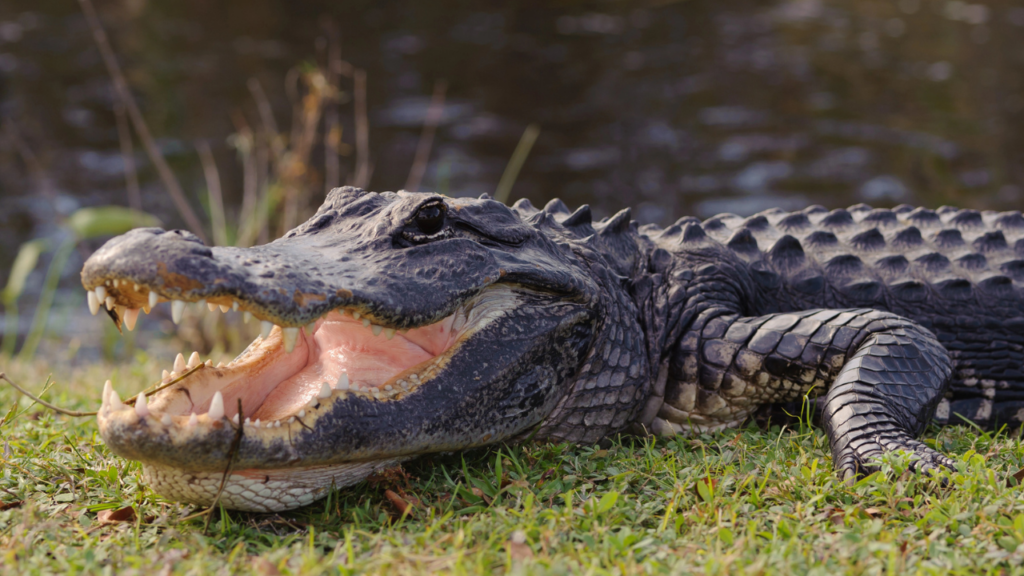Texas is a state blessed with sweeping plains, thick woodlands, winding rivers, and a variety of wildlife that’s as rich as it is wild. But for dog owners, especially those with small or medium-sized pups, that wilderness charm comes with a warning label. While most encounters with wildlife are harmless, some native predators see small dogs as easy prey—or, in some cases, as threats to be neutralized. From silent swooping birds to venomous reptiles and even spiky porcupines, the danger is real. Whether you live in the Hill Country, along the Gulf Coast, or near the edge of a suburban sprawl, it’s worth knowing who’s lurking out there.
Let’s look at 10 predators dog owners in Texas should keep on their radar—and more importantly, why.
1. Bobcats
Bobcats are elusive but widespread across Texas, from East Texas forests to West Texas deserts. Though they’re not typically aggressive toward humans, small dogs are a different story. A bobcat can view a 10-pound dog as no different than a rabbit. These wild cats are especially active around dusk and dawn, and they’ll take advantage of easy meals left unattended in backyards or near wooded trails.
Danger to Dogs: Sudden attacks, puncture wounds, and fatal bites to the neck.
2. Great Horned Owls

Yes—owls. Particularly the great horned owl, a silent, night-flying predator with a grip powerful enough to crush bone. These birds are found statewide and are known for hunting at night in rural, suburban, and even some urban areas.
Danger to Dogs: They can swoop down and carry off dogs under 15 pounds. In rare but real cases, they’ve even attacked larger pets if startled or provoked.
3. Coyotes
Coyotes are bold, adaptable, and increasingly common even in neighborhoods. They’re known for snatching unattended small dogs, especially in the early morning or evening. In Texas, coyotes roam from the Panhandle to the Gulf Coast—and they’re not shy about jumping fences or lurking near pet doors.
Danger to Dogs: Fatal attacks, especially to dogs under 25 pounds. Coyotes may also lure dogs away before ambushing them.
4. Alligators

Alligators are more than just Florida’s concern—they’re thriving in Texas too, particularly in the southeast and along the Gulf Coast. They inhabit swamps, lakes, and even golf course ponds. Dogs that venture near the water’s edge can be snatched in seconds.
Danger to Dogs: Drowning and crushing bites. Dogs near water are easy targets due to their splashing and curiosity.
5. Hawks (Red-Tailed and Others)

Several species of hawks inhabit Texas skies, including the red-tailed hawk and Cooper’s hawk. They generally stick to rodents and snakes, but small dogs aren’t off the menu. Like owls, they can snatch or severely injure a dog with their talons.
Danger to Dogs: Deep wounds, broken bones, and in rare cases, being carried off. Puppies are especially vulnerable.
6. Porcupines

Porcupines may not be predators in the classic sense, but they can cause serious harm to curious dogs. Found mostly in West and Central Texas, these slow-moving animals rely on their sharp quills for defense. And your dog won’t forget the lesson.
Danger to Dogs: Painful quill injuries to the face, mouth, and throat. Removing quills often requires surgery and sedation.
7. Mountain Lions (Cougars)

Mountain lions are shy but very real inhabitants of Texas, especially in the Trans-Pecos region and along the rugged Hill Country. They generally avoid people—but an unsupervised dog that stumbles into their territory can be seen as prey or competition.
Danger to Dogs: Fatal attacks. Mountain lions are powerful ambush predators capable of killing dogs much larger than themselves.
8. Western Diamondback Rattlesnakes

This venomous snake is the most common rattler in Texas. Dogs that nose around brush piles, rocky ledges, or hiking trails may stumble onto one. A snake won’t chase your dog—but if your pup gets too close, it might get bitten.
Danger to Dogs: Potentially fatal envenomation. Swelling, tissue damage, and shock can set in fast without prompt treatment.
9. Feral Hogs

Texas has a feral hog problem—one that’s big, mean, and dangerous. These aggressive animals weigh up to 300 pounds and are known to attack when cornered or defending their young. Dogs trained to track them sometimes get seriously hurt, but even pets out on a walk can be at risk.
Danger to Dogs: Gore wounds from tusks, trampling, or being chased and mauled.
10. Stray or Wild Dogs (Dog Packs)

Not a wild predator in the traditional sense—but just as dangerous. In rural areas of Texas, feral dog packs can become territorial and aggressive. Stray dogs may carry disease and see other dogs as rivals or intruders.
Danger to Dogs: Dog fights, bites, and possible rabies or parvo transmission.
How to Keep Your Dog Safe: Supervise Your Dog Outdoors, Especially at Dawn and Dusk
Predators are most active during the twilight hours—just before sunrise and after sunset. This is prime hunting time for coyotes, bobcats, owls, and mountain lions. If your dog is outside alone during these times, even a fenced yard may not provide complete protection. Always accompany your dog outside, especially if you live near woods, open fields, or water sources. For late-night potty breaks, use a flashlight to scan the yard first and make noise to deter lurking predators. A vigilant owner is the first line of defense.
Secure Your Yard with the Right Fencing and Lighting

A standard fence may not be enough to keep determined predators out. Coyotes can easily jump a 6-foot fence, bobcats can climb it, and raptors like hawks and owls don’t need to touch the ground to grab a small dog. Consider installing a coyote roller on the top of your fence to prevent animals from climbing over. Motion-activated lights can help scare off nocturnal predators. If possible, create a covered outdoor run or use pet-safe netting to prevent aerial attacks. Avoid leaving food, pet bowls, or trash outside, they attract wildlife.
Use a Leash and Keep Your Dog Close on Walks

Whether you’re walking through a neighborhood or on a trail, always keep your dog leashed. This not only prevents them from running off into brush where snakes or porcupines may hide but also makes it easier for you to scoop them up or pull them away if a predator is nearby. Extendable leashes can give your dog too much freedom—opt for a standard leash that keeps your pet within your control. If you live in an area where rattlesnakes are common, consider using a snake avoidance training program or dog-specific snake-proof vests.
Train Reliable Recall and Avoid Dangerous Areas

Basic obedience isn’t just for show—it can be lifesaving. A solid “come” or “leave it” command can stop your dog from charging after a wild animal, investigating a snake, or chasing into unsafe areas. Practice recall commands often and reward with high-value treats. Additionally, avoid walking through tall grass, thick underbrush, or near known wildlife dens. During snake season (spring through fall in Texas), stick to open paths where visibility is clear, and keep your dog on designated trails.
Stay Informed About Local Wildlife and Predator Activity

Knowledge is power. Stay up to date with local wildlife sightings and alerts by following community Facebook groups, local animal control updates, or apps like Nextdoor and iNaturalist. If your neighbors have spotted a bobcat, a pack of coyotes, or even a venomous snake, chances are they’re still in the area. Wildlife tends to stick to familiar hunting grounds. Knowing what predators are active in your region and when they tend to appear gives you an advantage. You can then time your walks, adjust backyard routines, and alert others.
Together, these steps form a strong defense for protecting your dog from Texas predators. Being proactive, informed, and prepared can drastically reduce the risk of a dangerous encounter—and let both you and your dog enjoy the great outdoors with peace of mind.
Texas is wild, wonderful—and yes, a little dangerous for our furry friends. But awareness is the first step toward prevention. Knowing who’s out there and how to avoid trouble can keep your pup safe, whether you’re out hiking trails or just letting them out for a backyard sniff. In the Lone Star State, loving your dog means being one step ahead of nature.

Sumi Sarkar from India holds a B Tech degree in Information Technology, is a freelance film maker, scriptwriter, content editor who loves animals, especially dogs.






